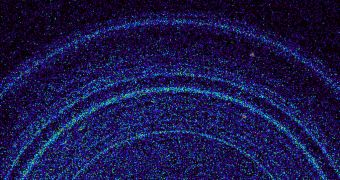Curiosity has completed its first analysis of Martian soil and the results are interesting, though not particularly surprising.
The first results of the analysis with the CheMin instrument aboard the Mars rover indicate that the dust and sand of Mars, at least at Curiosity's current location, is made up of volcanic rocks that have been weathered by the environment in time.
The scientists looking at the data found that the mineral composition of the fine dust and sand around the rover is similar to what you'd find on Earth in volcanic regions, like Hawaii.
"Much of Mars is covered with dust, and we had an incomplete understanding of its mineralogy," David Bish, CheMin co-investigator with Indiana University in Bloomington, said.
"We now know it is mineralogically similar to basaltic material, with significant amounts of feldspar, pyroxene and olivine, which was not unexpected. Roughly half the soil is non-crystalline material, such as volcanic glass or products from weathering of the glass," he added.
The CheMin instrument uses X-ray diffraction to discover the makeup of the samples it analyzes. Only very small particles of dust and sand were introduced in CheMin, smaller than 150 micrometers or 0.006 inch.
Based on the diffraction of X-ray light that is shone on the material, the instrument can determine its mineral composition.
Instruments like these are common on Earth, but the challenge for the Curiosity team, besides making one that would work in the harsh conditions on Mars, was making one that was small enough for the rover to carry.
"So far, the materials Curiosity has analyzed are consistent with our initial ideas of the deposits in Gale Crater recording a transition through time from a wet to dry environment. The ancient rocks, such as the conglomerates, suggest flowing water, while the minerals in the younger soil are consistent with limited interaction with water," Bish added.

 14 DAY TRIAL //
14 DAY TRIAL //